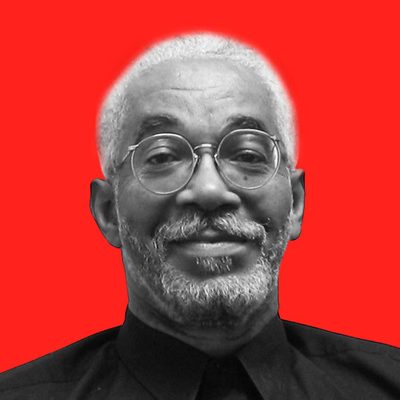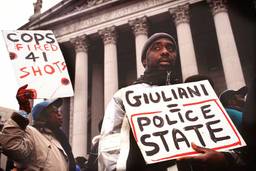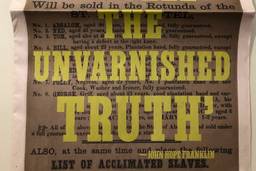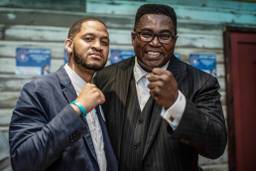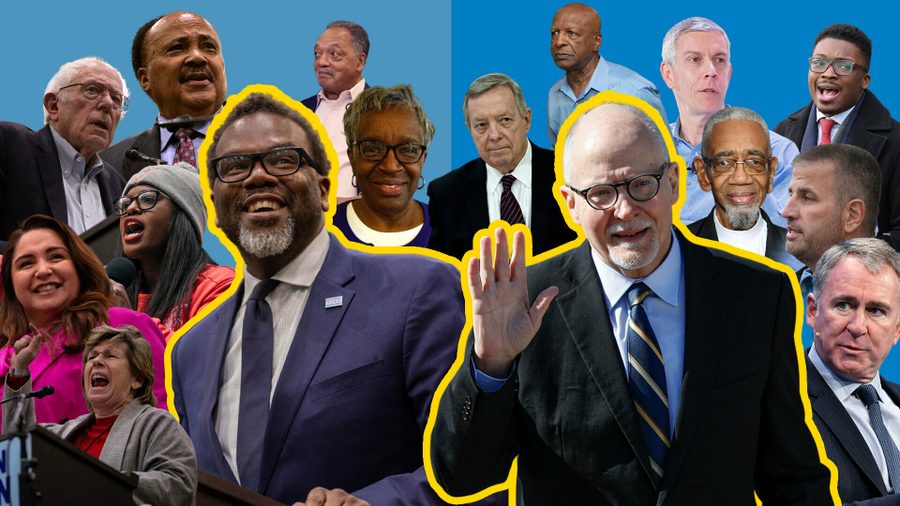
Chicagoans head to the polls today for the mayoral runoff between Brandon Johnson and Paul Vallas, and we should perhaps be grateful that racial demagoguery didn’t play an overwhelming role in the race.
However, that would only be an exercise in offering gratitude for small favors. Is transcending outright racism and blanket white supremacy a small favor, you might ask? Well, in Chicago, oddly enough, the answer is yes.
Although Paul Vallas is the white candidate in this race, he’s attracting an appreciable level of Black support, including from most of the Black candidates who opposed him in the primary. He’s backed by retired Illinois Secretary of State Jesse White, considered one of the most successful vote-getters in Illinois history, as well as by Bobby Rush, a retired congressmember and former Black Panther. But he’s also gained the support of the Fraternal Order of Police (FOP) and a host of conservative forces, including billionaire donors like Ken Griffin.
Vallas campaigned hard on an anti-crime theme and was sometimes caricatured as the right wing’s candidate, but his history reveals a bit more political nuance. This misperception worked to his advantage, allowing him to hint support for extremes on both sides including the FOP’s largely white, conservative constituency and the Black-led, ex-con (“returning citizens”) groups seeking legitimacy and funding as “violence preventers.”
Vallas pulled most of his votes from white wards in the Northwest, Southwest and lakefront. Chicago remains a starkly segregated city where location can designate racial identity.
Brandon Johnson, the Black candidate, is a former middle school teacher and organizer for the Chicago Teachers Union (CTU). Progressive political and movement icons like Sen. Bernie Sanders, Rep. Ayanna Pressley and Martin Luther King III have come from afar to support Johnson, and he has churned up a lot of excitement in the city’s progressive haunts. But most political analysts say his white support, while impressive, is limited to self-described progressives, and that Johnson needs to attract a huge number of Black voters to have a real chance at victory.
Some might regard these cross-racial allegiances as anomalous, but quite the contrary. This “city of broad shoulders” has long had a muscular collusion between its renown political machine and a subaltern Black facsimile. It’s an arrangement forged to accommodate power disparities between the city’s reigning ethnic fiefdoms and Black communities maimed by slavery’s lengthening legacy.
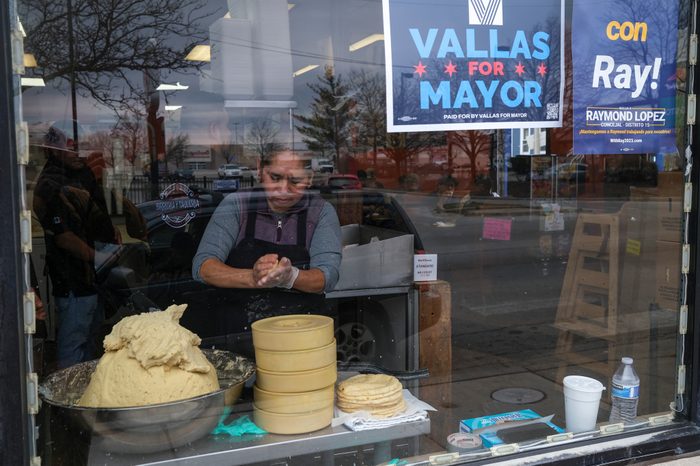
The pattern was established early in the 1930s with the election of William Dawson as the second Black Republican alderman of Chicago’s 2nd Ward, where he served for six years. (The first was the famed Oscar De Priest.) Dawson was later appointed committeeman of the ward by Democratic Mayor Edward J. Kelly, after President Franklin D. Roosevelt’s New Deal wave swept him into a new party. Once ensconced, Dawson effectively used patronage and precinct workers to consolidate political power and provide a reliable voting block for local and national Democrats.
Dawson’s net of relationships, knit from decades in the political trenches, helped him build a Black political organization that became an important cog in the legendary Chicago machine. It was a Black subsidiary, of sorts, and it regarded platforms pushing progressive policies (like equitable taxing, a rent commission and police reform) with suspicion.
Ironically, it was this cautious, traditionalist Black machine that helped produce Harold Washington, Chicago’s first Black and most progressive mayor. But Washington had to oppose his nurturers to win the seat. Washington came in third during his initial mayoral campaign in 1977, after winner Michael Bilandic and Roman Pucinski, but won a congressional seat in 1980. There, he became a leading voice for progressive causes during Ronald Reagan’s bleak presidency.
Washington’s enhanced national stature convinced Black political activists in Chicago that he was their best choice to take on two white candidates and they drafted him to make another run for mayor. However, the Black machine still viewed his progressive alliances suspiciously. What’s more, pollsters found that Jane Byrne had quite a bit of Black support in a three-candidate race between Washington, Byrne and Richard M. Daley. It was only after Chicago’s Black electorate realized the Byrne-Daley split offered a unique opportunity for the eloquent Washington that the campaign caught fire and became a movement.
As a reporter keyed into Chicago politics, I discerned similar dynamics in the later campaigns of Chicago’s Jesse Jackson (during his 1984 and 1988 presidential runs) and Barack Obama (when he ran for Rush’s congressional seat and lost). Their progressive alliances hampered their reception by elements of the Black machine.

Johnson is of that same lineage and is regarded with similar skepticism by that same array of forces. His route to prominence came through the CTU and the progressive networks of which the Black machine is notoriously suspicious.
This is not to simply dismiss those suspicions — Black disadvantage has too often been used to justify progressive platforms without input from the putative victims, and those charges of arrogant saviorism sometimes hurled at white progressives are occasionally justified. However, the tribal insularity encouraged by this ossified stance has impeded the growth of effective coalitions between the descendants of slaves and other people of color — a potential relationship that has essentially been on hold since the Washington years.
The hope for a revival of that spirit is one of the primary reasons the Johnson campaign has sparked such interest. It marks the most serious attempt to craft a progressive coalition since the hallowed Washington years.
Johnson’s campaign also vigorously resists the cynical defeatism that seems to have demobilized many progressives during the Trump-MAGA era. This Vallas-Johnson battle has attracted national attention because it offers a path to national healing.
Today will determine whether the wound will fester or mend.
As a 501©3 nonprofit, In These Times does not support or oppose any candidate for public office.
Salim Muwakkil is a senior editor of In These Times and host of “The Salim Muwakkil Show” on radio station WVON-AM in Chicago. Muwakkil was also contributing columnist for both the Chicago Sun-Times (1993 – 1997) and the Chicago Tribune (1998 – 2005). He is also a co-founder of Pacifica News’ network daily “Democracy Now” program and served as an adjunct professor at Northwestern University, University of Illinois, the Art Institute of Chicago and Chicago’s Columbia College.
